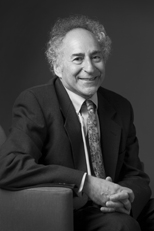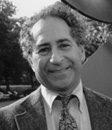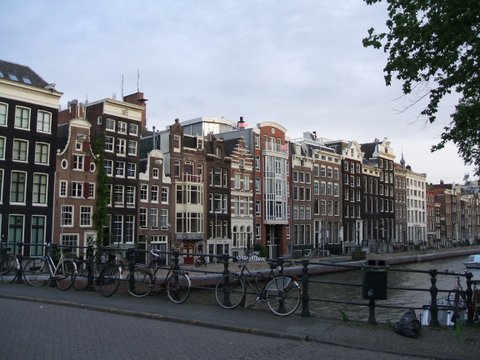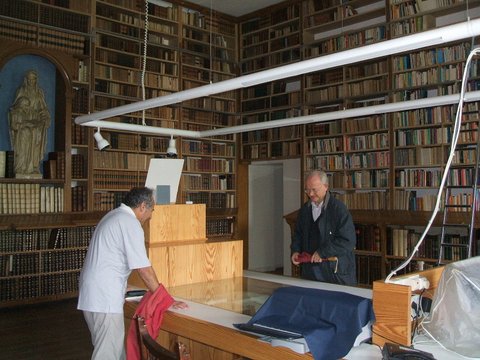Springing into the Lowlands: Exploring Major Cities in Holland and Belgium
"High Times in the Low Countries: Travels Through Belgium and Holland offer Art, History, and Warm Welcomes," with photographs taken by Marcia Jacobson The Syracuse Post-Standard Sunday STARS Magazine, July 15, 2007.
"Let's make our next Europe trip when the sun is shining and the days are long," remarked my wife during some grey days of a recent winter travels to Germany.
"Yes, I would love to explore Holland and Belgium. We could focus on Flemish art and Belgium and Dutch history, with a special focus on their colonial past and Jews during the Holocaust. And the cities are close together so we won't waste a great deal of time moving from place to place."
Getting Started:
Holland and Belgium, known as the Lowlands, are easy countries to visit because cities are close together, most people speak at least some English (more so in Holland than Belgium), and the people are welcoming to tourists. Our trip included four nights in Amsterdam followed by two each in The Hague, Antwerp, Bruges, and three in Brussels. We flew to Amsterdam and returned from Brussels, using Delta from Syracuse. Within Europe we took trains, which are reliable and inexpensive and gave us an opportunity to see fine scenery.
Spring weather was as unpredictable as that of upstate New York. Our first three sun-drenched days contradicted the image of rainy Amsterdam: temperatures ranged from 70 to 80 Fahrenheit with slightly cooler nights. But the next three days in Amsterdam and The Hague more than made up for it in cold and rain. Our days in Belgium were mostly sunny and, after the a few chilly days in Antwerp, quite warm.
The dollar is weak against the Euro and with exchange charges—credit card companies charge as much as 3 per cent foreign exchange fee-- each Euro is worth about $1.40. The good news is that you not need be a world traveler to arrange your own Lowlands travel without joining a tour. Traveling on your own and making your own hotel arrangements via the Internet is easy and allows you more freedom within your travels. Except when visiting exotic places, we prefer this mode of travel to organized tours when we are on someone else's schedule and cannot linger in museums, make new acquaintances, and or stumble upon exciting experiences.
Holland's Golden Age was the 17th century when it was a major economic and colonial power, due in part to the explorations of the Dutch West India Company. The Northern and Flemish part of Belgium known as Flanders belonged to Holland at that time and still speaks Dutch.
|
Amsterdam is a city of canals—particularly at the center-- and a good introduction is an hour-long boat trip through some of oldest canals in central city. Notable are the splendid 17th century canal houses along Herengracht and the houseboats on Prinsengracht.
Amsterdam is a great walking city-- indeed, so were all the venues we visited-- and it is light past 10:00 pm in late May. The city is something of a revolving youth festival, drawing young people from all over the world, in part because of its tolerance of drugs and sex. The population is young and vibrant, and in our experience as friendly as any in Europe. The central square is Dam but the younger crowd migrates to Leidseplein.
The essential museums are the Anne Frank House, the Rijksmuseum, which is closed until 2010 except for a display in one wing of its masterworks, featuring Rembrandt (among the best known: "The Night Watch," "The Guild Members," "The Jewish Bride") Vermeer ("The Love Letter," "The Kitchen Maid"), Jan Steen and Franz Hals. The Van Gogh Museum, which not only has a wonderful Van Gogh collection and very viewer friendly displays and information, but also as well an outstanding special exhibit of Max Beckmann paintings.
Holland and Belgium were both occupied by the Nazis during World War II. With a full history of Jewish life in Holland, including a strong section on the Holocaust with filmed interviews of survivors, the Jewish Historical Museum (Nieuwe Amsterdam 1) is a wonderful complement to the Anne Frank house. As both places make clear, Jews were sent to Westerbrok, a transit camp, from which a train left every week for concentration and death camps.
Major sites include Oude Kirk, a Catholic basilica that began as the first parish church in the 14th century and then became major Protestant church before becoming an exhibition hall. Dating from the late 14th century, Nieuwe Kerk was the second parish church, and its current version dates from the 1650s; reflecting the centrality of the sermon in Protestant churches, its most elegant feature is a wood-craved pulpit. It is still used for coronations and royal weddings.
Amsterdam oscillates within virtually every block from chic to shock; elegant shops and fine restaurants are virtually adjacent to prostitutes displaying themselves in lingerie while sitting in shop windows marked by red lights and to stores selling what in Amsterdam are considered legal recreational drugs. The aforementioned Oude Kirk is adjacent to the red light district, which is active even in the daytime. Our hotel was near an upscale urban neighborhood with upscale housing. Yet even here prostitutes sat in windows.
International Court, The Hague |
On our fifth day we took a forty-five minute train ride to The Hague, the political center of Holland where the government resides, although Amsterdam is the capitol. We spent 4 wonderful hours at the Mauritshuis, a terrific collection of Dutch masters through the 17th century with world class Rembrandts ("The Anatomy Lesson," "Portrait of an Elderly Man") and Vermeers ("Girl with a Pearl Earring") as well as exceptional paintings by Rubens, Hals, Steen, Hobbema, Van Dyck, Holbein and others. Yet compared to the excitement and energy of Amsterdam, the Hague is vanilla.
One of our days in the Hague was a national holiday celebrating the Monday after Whitsunday—the day the Holy Spirit descended upon the apostles—and many buildings were close. We took a substantial walk and saw the historic collection of government buildings known as Binnenhof where the Parliament meets. We also visited the Vredespaleis (The Peace Palace) where the International Court sits.
Our next stop Antwerp, Belgium's second largest city and its fashion center, features splendid baroque and neo-baroque architecture. Our hotel was on Groenplaat, the location of the largest cathedral in the Lowlands and one that is not only beautiful but has four works by Rubens, including "The Raising of the Cross" and "The Descent from the Cross," both of which show the strong influence of Caravaggio. The Groenplaat is adjacent to Grote Markt, the most elegant square dominated by a stunningly imposing town hall and impressive guildhalls. The most important museum is the Royal Museum of Fine Arts, featuring Van Eyck, Memling, Rubens ("The Adoration of the Magi") and Van Dyck. While lacking Rembrandt and Vermeer, this museum takes Flemish art into the twentieth century with a strong selection of the modernist James Ensor, among others.
Antwerp has a flourishing and observant Jewish quarter adjacent to the diamond district—am essential part of the world's diamond industry-- near the elaborate 19th century Central Station. In the area branching out from Pelikaanstraat can be found many Hasidic groups among the mostly orthodox Jewish population and many synagogues worth visiting. Another notable site is Rubens House.
To begin our two-night three-day visit to Bruges, we took a half hour canal boat tour to get ourselves grounded in the picturesque, quaint central city. Market Square—featuring the Bell Tower (Belfort)-- as well as the adjoining Burg Square featuring Stadius-- the old town hall--and its great Gothic room are memorable sights. Much of the original medieval city has undergone several phases of reconstruction and refurbishing. Bruges subscribes to the Mambo Number Five theory of architecture, a little bit of this and a little bit of that, so gothic and baroque intermingle with Romanesque, Renaissance, Art Nouveau, Art Deco, and belle époque. But the "more is more" philosophy works here, even when several styles co-exist in the same building.
We continued reveling in early Flemish art with a visit of several hours to the Groeningmuseum—featuring van Eyck's" Virgin and Child with Canon"--and to the Memling museum (which contains five Memlings and much other contextual material) at the restored 12th century St. Johns Hospital.
|
The Church of Our Lady contains the only Michelangelo outside Italy, a small masterwork of the Madonna. St. Saviour's cathedral dates to the 13th century and is an amalgam of styles and decoration, including beautiful stained glass. We happened by chance upon a Carmelite church and monastery, The archivist invited us to see the church's breathtaking collection of ancient documents, including a thirteenth century letter from the Pope authorizing protection of the Carmelite orders from the jealousy of other monastic orders.
Our last stop was Brussels where we stayed three nights before flying home. Brussels is mostly French speaking, especially the Southern part known as Wallonia, and fewer people will respond in English—or know rudimentary English-- than in other cities we visited. Our hotel was in the upper town where most of the museums are, but we made our way to the obligatory and quite dazzling tourist sites in the lower town, especially the Grand Place—the most prominent public square where tourists and locals congregate-- dating back to the middle ages. Major buildings are the Hotel de Ville and the Maison du Roi (House of the King). The architecture includes the characteristic Belgian mélange I mentioned above.
Originally the Lower Town was Flemish speaking and a trade center and the French-speaking aristocracy populated the Upper Town, but that distinction has broken down. A statue of King Leopold is prominently displayed near the Place Royale near the Royal Palace without, of course, any of mention of the horrors he inflicted on the Congo, the subject of Conrad's Heart of Darkness.
Other impressive buildings include the St Michael and Gudula Cathedral—dating from the 11th century—and the stylish Notre Dame du Sablon church, La Bourse (the stock exchange), the Palais de Justice, the Grand Synagogue, St. Nicholas Church and, perhaps most notably, the elegant Neo-Renaissance Galeries St. Hubert--the grand arcades dating to 1847 and considered the first European shopping arcade. Brussels is punctuated with sightly gardens and parks, and Place du petit Sablon, next to Notre Dame du Sablon, is a fine place for a picnic.
A visit to the Musee Royaux des Beaux-Arts concluded our informal course in Flemish art (Highlights: Rubens "The Assumption of the Virgin" among many masterworks, several Memlings and Van Dycks). The admission ticket also includes the remarkable nineteenth and twentieth century Musee d'Art Moderne, which is attached and part of the Musee Royaux des Beaux-Arts. We also visited the small Jewish history museum and a synagogue. Keep in mind that as in Holland, most museums are closed in Belgium on Monday.
Dining: All restaurant prices below are based on dinner with service for two and exclude alcohol but include $5 bottled water in Belgium. Bottled water is de rigueur in Belgium where, unlike Holland one cannot ever order tap water, (Beer is cheaper than water. Tipping is not required, although a nominal gratuity of loose change is appreciated.
Holland proved a culinary delight. Our most elegant dinner in Amsterdam was at Borderwijk (Noodermarkyt 1051; $95), known for its innovative and imaginative presentation. Yet perhaps our best Holland dinner was at Maxime (Denneweg 10B) in The Hague, which had a terrific value at 29 Euros per person ($84 for two) for a sophisticated four-course meal that is not only delicious but also beautifully presented.
We twice sampled Rijsstafel, the traditional Indonesian meal where all the courses are put on the table simultaneously. We chose an 11 course version at Kantjil and de Tijger (Spuistraat 291-293; $60). We had another Rijstaffel at De Poentdjak (Kneuterdijk, The Hague, $55),) which was spicier and had more courses but was no better than the one in Amsterdam. We enjoyed inventive small courses—kind of Belgian tapas-- at Lieve Belgisch restaurant (Herengracht 88 1015; $50)
Our premier dinner in Belgium was at Au Bon Coin, the restaurant of the Renaissance hotel where we were staying. Phillippe Lecompte, Executive chef, produced a feast for two featuring Risotto with chanterelles and prawn, followed by filet of lamb over white asparagus, and moelleux of chocolat ($90). At Saint Cantrois (Sint Jacobstraat 53; $60) in Bruges we dined on a marvellous set menu, featuring red mullet, duck pate, and chocolate crepes.
We had an excellent mussel dinner in Antwerp at Rooden Hoed (Oude Koornmarkt; $70)—although mussels, a Belgian specialty are of out season and we had Canadian mussels.
Hotels: What we Americans think of as a three star hotel is often given four by the rating authorities in Holland and Belgium and some five star hotels are really more like a good four star.
Our best hotel was the Hilton Antwerp in old shopping center that looked like a Belle Epoque palace. Our room on the Executive floor was enormous and we couldn't have been treated better. Truly a great hotel is a vacation in itself; it seduces you to spend some part of each day in your room or in the fitness facility and to try the hotel restaurant.
Our second best hotel was the Marriott Renaissance in Brussels but, although we had a fine room on the Marriott Club floor and it had a nice fitness center, it didn't always seem to have the polish of a true five star luxury hotel until we had the aforementioned dinner at its restaurant. Breakfast lacked the true amenities of a top hotel, namely an eager staff, a capable breakfast chef, fresh juice and fruit, omelets as well as fried eggs to order, and light, flakey, buttery croissants—all of which we had at the Antwerp Hilton.
Well-located near the Central Station, the Golden Tulip Hotel Inntel Amsterdam Centre provided us with a king size bed, and the service was friendly but the hotel does not have a restaurant. Breakfast was quite ordinary—certainly not up to its four stars ---although one plus was that you could squeeze your own fresh juice.
In The Hague we stayed at the four star Eden Babylon hotel conveniently adjacent to the Central Station. Breakfast was not included and, while we had a splendid room on high floor, the hotel was in an uneasy transition from being a Sofitel. In Bruges, we stayed at the Scandic, which because of its location outside the central city cannot be recommended for a traveler without a car or bike. While a purportedly four star hotel and a good value, it was quite basic, especially breakfast.


 Amsterdam Canal
Amsterdam Canal Archives in Franciscan church, Bruges
Archives in Franciscan church, Bruges